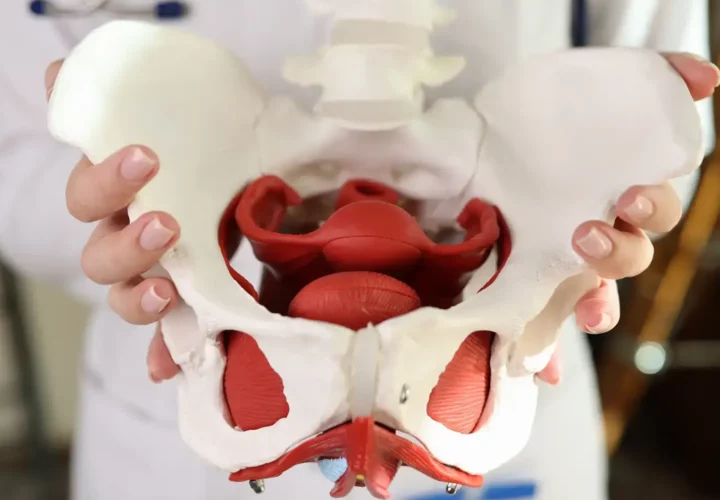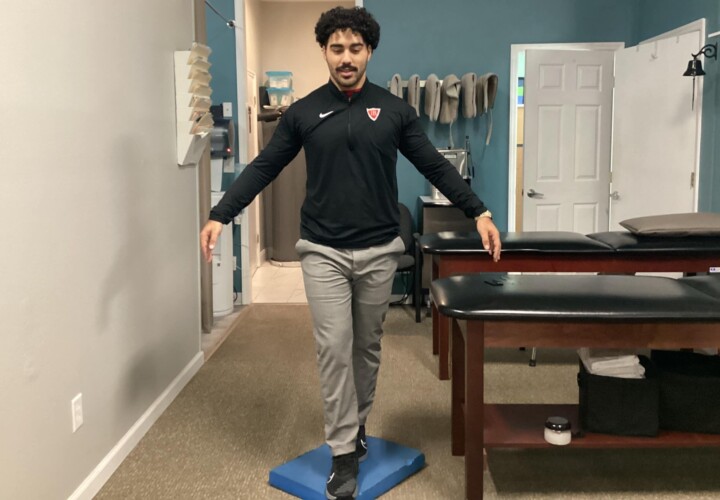Statistics on Balance and Falls
One issue that may become problematic as we get older is changes in our balance systems which could potentially increase risk of falls. A fall is defined as a loss of balance that may affect your stability and movement. The statistics around falls is also incredibly startling! So much so that the Centers of Disease Control (CDC) has its own task force to help address risks. 1 in 4 older adults report falls, but most adults do not tell their physician. In a survey taken by the CDC, the number of falls increase with age. As the 65-74 years old age group reports 27% of participants have fallen. The 75-84 years old group reports 30% have fallen. Lastly, the 85 years and older group reports about 37% have fallen.
Almost every second, it is reported that an older American falls. Falls threaten the older adult’s independence and health and results in increasing medical costs in the healthcare system. Falls can also lead to serious consequences. More than 7 million of reported falls require medical attention. And more than 27,000 older adults die as a result of a fall. That’s close to 74 older adults every day. Falls increase your risk of a traumatic brain injury, hip fractures, and ultimately affect your level of independence.
While this may seem like some worrisome numbers and statistics, there are ways to help decrease your risk and make sure you are safe. 
Changes that Occur as We Get Older
While some changes may be considered a normal part of the aging process, some things may need to be addressed. While it is common to lose some muscle mass and strength as we get older, getting so weak that it is affecting your daily activities is not normal. This should be addressed so you can go back to doing your normal activities. Vision changes may occur, but precautions and testing should be done to make sure you have the correct lenses and assistance to be able to navigate through your house and community. Please remember that having falls, multiple losses of balance, or “near stumbles,” is NOT normal and should require some further investigation as to why it is happening.
Conditions that may affect balance
Peripheral Neuropathy
Some chronic conditions, such as diabetes, may affect the sensation system of the body which allows you to “feel” your environment. People that experience peripheral neuropathy usually report feeling loss of sensation, and increased numbness or tingling of the hands and feet. These sensation changes affect your body’s way of sensing where it is in the environment, and may make it harder to balance.
Vestibular Disorders
Your vestibular system is located in your inner ear, and works to communicate with your brain and body about the body’s location in space. It is one of the major systems in your body that helps control your balance. Conditions, such as BPPV, may affect your inner ear and cause the person to feel symptoms of vertigo, or feeling like the room is spinning. These sensations can make it difficult to maintain your upright balance, and may increase anxiety about falling.
Vestibular conditions can also happen after a traumatic brain injury, such as those caused by falls, concussions, or trauma. Dizziness, and/or vertigo for prolonged periods or repeated cases is not normal and should be further assessed by a medical professional.
Neurologic Conditions
Conditions such as stroke, spinal cord injuries, traumatic brain injuries, Guillain Barre syndrome, paralysis, multiple sclerosis, parkinson’s disease, and other neurological conditions that affect your ability to move can affect the body’s ability to maintain balance.
Risk of Polypharmacy
As we get older, the body’s way of absorbing and using medication is affected. The risk of polypharmacy is also another risk factor that can affect risk of falls.
Polypharmacy can be defined as the use of excessive or inappropriate medications. When people have multiple physicians and pharmacies they use, the risk of having multiple medications for the same condition increases. Too many medications can affect your levels of consciousness and attention, blood pressure, vision, and other side effects. These side effects can increase your risk of falls.
Orthopedic Conditions
Any condition that can affect your joints or muscles that causes pain or decreases your ability to participate in your daily activities can increase your risk of falls. Some examples can include severe arthritis that affects your ability to get in and out chairs, bed or shower/tub, back pain that restricts your daily activities, or pain that affects your way of walking.
Surgery
After surgery, it is important to consider the amount of help you may need. Also any restrictions that may be in place because of the surgery. Depending on the surgery, it may affect your ability to move significantly enough where you may require extra assistance either with another person or with an assistive device, such as a cane or walker. Some patients are also prescribed certain medications after surgery that may affect their blood pressure or levels of consciousness which may affect their balance.
Incontinence
The feeling of not being able to make it in time for the bathroom, or having multiple accidents can increase your risk of falls. Some people may get a tendency to speed up which may cause them to lose their balance, or if they have an accident they may slip and fall.
Vision
Vision changes are normal as we get older. However they should be addressed by the appropriate professionals for any need of eyewear or medications.
Things that may change is your ability to perceive depth and color contrast. Examples of where vision changes can make life more difficult is judging distance of a stair step (depth perception), or differentiating colors of medications (light pink pill vs a white pill). These changes can increase risk of falls, or may make you less safe.
Anxiety
Increased fear or anxiety of falling can actually increase your risk of falling, even if you’ve never fallen before.
How can older adults and caregivers reduce risk of fall and stay independent longer
Speak up!
Talk to your physician or physical therapist about falls risk and prevention, and make sure to let them know if you have fallen, feel unsteady, or are scared of falling.
Stay active!
Activities that challenge your lower body strength and balance can help decrease risk of falls
Vision checks
The CDC recommends having a vision screening once a year, and update eyewear as needed.
Check safety of the home
Get rid of any hazards at home that may increase change of stumbling or tripping
Unsecured rugs, or chunky rugs
Adding grab bars in the bathroom
Handrails and lights installed in the staircases
Make sure the house has plenty of light
Keep track of all your medications
It is helpful to keep a complete list of all your medications between all your physicians. This will make it ready to reference whenever the pharmacist or physician asks for them. It can also prevent any errors in dosages and types of medications.
The CDC also has multiple resources available online on prevention of falls:
How Physical Therapy Can Help
Physical therapists are trained to complete a full evaluation. This considers your current abilities, your medical and medication history, and other factors that may increase your risk of falls. PT’s help target strength, and balance interventions as well. They keep record of how you do on evaluation day, progress note day, and discharge day. Lastly, physical therapists are movement experts and are able to recognize what needs to be addressed. They will target these interventions to functional activities that you typically do at home and in the community; such as: walking up steps or curbs, transfers in and out of chairs/beds, walking on even and uneven surfaces, and other interventions that will be specifically tailored to your needs to increase your confidence and decrease your anxiety about your balance and falls.
Alongside from the exercise interventions, physical therapists are also trained to recognize when medications, vision, or other medical conditions may be affecting your ability to participate. They will advocate for you to reach out to other medical professionals to have this addressed.



